Historic houses, green expanses and a river running through it
This walk has it all – watercourses big & small, one of Europe’s largest urban parks, a clutch of historic houses and the garden that began the landscape garden revolution
WALK DATA
- Distance: 17.6kms (11 Miles). A good break point if you prefer to do the walk in two parts would be Richmond Station.
- Height Change: none
- Typical time: 4.5 hours
- Start & Finish: Chiswick Station (W4 2QE)
- Terrain: Mixed urban and rural terrain, walking boots recommended
BEST FOR
‘Green Spaces’
| Parks, gardens, squares, cemeteries | Chiswick Gardens, Dukes Meadows, Palewell Playing Fields, Richmond Park, Petersham Meadows, Richmond Green, Terrace Gardens, Kew Gardens, Kew Green |
| Natural landscapes | Richmond Park |
| Rivers, canals, lakes | Bollo Brook, River Thames, Beverley Brook, Pen Ponds |
| Stunning cityscape | View towards the city from Sawyer’s Hill in Richmond Park; view down the Thames from Richmond Hill; Treetops Walkway, Kew Gardens |
‘Architectural Inspiration’
| Ancient Buildings & Structures (pre-1714) | Syon House (1547), Ham House (1610) |
| Georgian (1714-1836) | Chiswick House (1729), White Lodge (1730), Pembroke Lodge (1754), Kew Orangery (1761), Kew Palace (1801) |
| Victorian & Edwardian (1837-1918) | Kew Glasshouses (1840s-50s) |
| Industrial Heritage | Richmond Lock and footbridge (1894) |
| Modern (post-1918) | Chiswick House Café (2010), the Alton Estate (1958), Princess of Wales Conservatory (1987), University of London Boat House (1936), Hartington Court (1930s) |
‘Fun stuff’
| Great ‘Pit Stops’ | Chiswick House Café, Orange Pekoe, Hollyhock Café, Pavilion Café at Kew |
| Quirky Shopping | Dukes Meadow Sunday Market: White Hart Lane, Barnes; Heron Square weekend markets; to the east of Richmond Green |
| Places to visit | Chiswick House, Ham House, Syon House, Kew Gardens |
| Popular annual festivals & events | Oxford & Cambridge Boat Race, Barnes Bridge (spring); May Fair, Richmond Green (early May); Festival of Cycling, Richmond Park (end of July); On the Edge World Music Festival, Richmond Riverside (Aug); Kew Green Midsummer Fête (mid-June) |
City population: 8,538,689 (2011 census)
Urban population: 9,787,426 (2011 census)
Ranking: Largest city in UK
Date of origin: 43AD
‘Type’ of city: capital city; seat of government, commerce and culture.
City status: Since time immemorial
Some famous inhabitants:
Richmond: Too numerous to list, although the one most often cited is Mick Jagger, who lived for a long while on Richmond Hill; probably best to check out the list at https://en.wikipedia.org/wiki/List_of_people_from_Richmond_upon_Thames
Number of Listed Buildings: Hounslow: 518, of which 32 are Grade I and 29 Grade II*; Richmond: 821, of which 40 are Grade I and 87 Grade II*
Films/TV series shot around here: Vanity Fair (2004, Chiswick House grounds), Never Let Me Go (2010, Ham House), Anne of The Thousand Days (1969, Richmond Park), Billy Elliott (2000, The Royal Ballet School in Richmond Park), The Madness of King George (1994, Syon Park), ‘Paperback Writer’ Beatles video (1966, Chiswick House Gardens).
THE CONTEXT
In the 16th century, Henry VII built a Palace in the royal hunting park at Richmond, moving his court there for the summer months and changing people’s perceptions of the area. The presence of the court drew nobles and influential courtiers to the area, and the nearby village of Kew grew rapidly over the next 100 years. By the 17th century, Kew’s place as a hub of power and political intrigue was firmly established.
The power has ebbed away, but the beauty of the landscape never has; the wildness of Richmond Park and the stunning beauty of the River Thames as it twists and turns in the valley below, and the pastoral idyll of the Petersham Meadows. And the historic houses lined up along the river making it feel like a film of British royal history.
THE WALK
Our walk begins, however, in the midst of a very suburban, residential scene, at Chiswick Station. We gathered in front of the Station House (now offices), built in 1849 by the Duke of Devonshire along the lines of a small classical villa. It was initially a hotel, designed to kick-start enthusiasm for the Duke’s ambition to create a high-class residential area for wealthy merchants in the surrounding vicinity (he’d certainly be satisfied by today’s house prices).
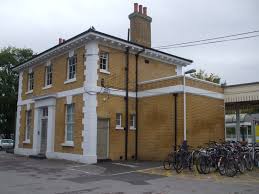
My delightful walking companions today are very typical Londoners. They have lived and worked in London for much of their lives, with stints abroad, the city providing both career-stretching opportunities and rich cultural diversity. But interestingly they all arrived by car to start the walk. We may have lived in a city for many years, but often our view of the city is essentially car-borne. And whilst everyone knew bits of the walk we were to take today (‘I remember that pub, that’s where we used to regularly meet up when I first came to London’), much of it was unfamiliar. Which goes to prove a point. Urban rambling is by far the best and quickest way to properly get to know a city.
Our host for the day was my old walking mate Oliver, himself a resident of Chiswick. Oliver had grown up a country lad, but now he wanted the best of both worlds; to live equidistant between the airport and the city for his work; and to be near Richmond Park, so his girls could climb trees, jump across streams and get muddy in much the same way he had as a kid on Dartmoor.
The residential streets approaching Chiswick House are peaceful and prosperous today, the very picture of contented suburbia. But the street that we soon came into, Staveley Rd, met with calamity one early evening in 1944 as the first V2 rocket launched against Britain crashed into the street, killing three, injuring more than 20 and destroying several houses, forming a crater 40 feet across and 30 feet deep in the process. The War Office tried to hush up the truth for fear of its impact on morale, suggesting there had been a gas leak, but when the Home Secretary Herbert Morrison arrived the next day to inspect the damage it was evident that something much more profound had happened.
One of the three killed was a young man, Frank Browning, strolling down the street on the way to the station we had just departed from, to hop on a train to see his girlfriend, his life cruelly and suddenly ended. Today there is a memorial, rather unedifyingly set beside an electricity sub-station; perhaps more poignantly, if you look along the street you can see where a number of the original flowering cherry trees planted in the 1920s were destroyed, and subsequently replaced after the war; these later trees are a little thinner. There are also some newer houses.
Then we turned right through the Staveley Rd gates into the splendour of Chiswick House Gardens and our first sight of the garden that kicked off the landscape garden revolution in the eighteenth century. As Rowan Moore, writing in the Guardian, put it so well:
“Chiswick House helped to change the world or, at any rate, the world of gardens. Created from the 1720s to the 1740s by the wealthy Lord Burlington and his protégé, William Kent, it led the way in breaking with the formal geometries of baroque gardens and replacing them with asymmetric and informal patterns that mimicked and followed the shapes of nature. Kent, as Horace Walpole said, “leaped the fence and saw that all nature was a garden”. After him came the landscape gardens of Capability Brown and Humphry Repton and, ultimately, every hillock and winding path, and every picturesque gazebo and rockery in suburban gardens everywhere, can claim descent.”
The gardens had a freer, more luscious design. Straight lines were out, curves and clusters in. ‘Natural’ spaces were created, their informality highlighted by the careful addition of sculpture and other architectural details including an Ionic temple and Doric column, to evoke the mood and appearance of the ‘rus in urbe’ of ancient Rome. Lord Burlington’s gardens were inspired by such gardens as those of the Emperor Hadrian’s Villa Adriana at Tivoli. The bordering parkland was opened up and made part of the garden. A lacework of meandering paths was introduced which means you can wander the grounds for an hour or more and never take the same route twice. The gardens are acknowledged as the birthplace of the English Landscape Movement.
These gardens inspired countless gardens including Blenheim Palace and many public parks. The link to public parks came via the subsequently famous Joseph Paxton, who worked as a gardener here and was deeply influenced by it. He went on to design many public parks, including Prince’s Park in Liverpool (see our walk) and Birkenhead Park in Mersey. Olmsted, the creator of New York’s Central Park, was much impressed when he visited Birkenhead in 1850 on a European tour to gain inspiration for his own iconic creation.
Walking along one of these meandering paths, we suddenly set eyes on Chiswick House, a magnificent neo-Palladian villa. Built by the third Earl of Burlington in 1729 to showcase his art collection and to entertain, the house continues to display many spectacular works of art. It was inspired in part by several buildings of the 16th-century Italian architects Andrea Palladio and his assistant Vincenzo Scamozzi. The architect was also William Kent, the man who had designed the gardens (he was a man of many talents, being a notable furniture designer too).
Our path took us across the Classic Bridge over the lake. This lake was fed by the Bollo Brook, one of London’s lost rivers, that flows down through Acton (alongside what is today the meandering Bollo Lane, which ran alongside it) and residential Chiswick, emerging here for a brief stretch.
The Chiswick House Café is a thing of modernist beauty, designed by award-winning architects Caruso St John. Its elevation recalls the arcaded facades of the stable wings of Italian country villas, and through these references makes a strong spatial link back to the main house.
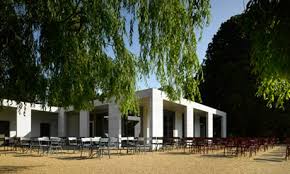
Leaving through the Great Chertsey Rd Gate, we soon reached Dukes Meadows. The area has been well looked after, thanks to the considerable efforts of the award-winning charity, Dukes Meadows Trust, that spearheaded the regeneration of the meadows to create a beautiful riverside park. Starting in 2000, the trust has raised over £1 million to create play areas and has planted hedgerows, wildflower meadows and an orchard to increase the bio-diversity of the park. There are also a considerable number of allotments. A notable success has been the Sunday Fine Food Chiswick Market, at the entrance as you come in. It is these sorts of community efforts that become increasingly important as council funding for green spaces diminishes under budget pressure.
Finally, we just wanted to check where the Bollo Brook comes out into the Thames. It isn’t pretty, but somehow it was satisfying to find it, just a few yards east of The Fantastic Herons Community Art Project sculpture. Those in the know describe it as a ‘7-ft. ferro-concrete culvert of special design’. Who am I to disagree?
Next, we crossed Barnes Bridge (1895), apparently one of only two bridges in London to combine pedestrian and rail use. In the Oxford and Cambridge Boat Race, the crew which is ahead at this point almost always wins, so it is an important marker.
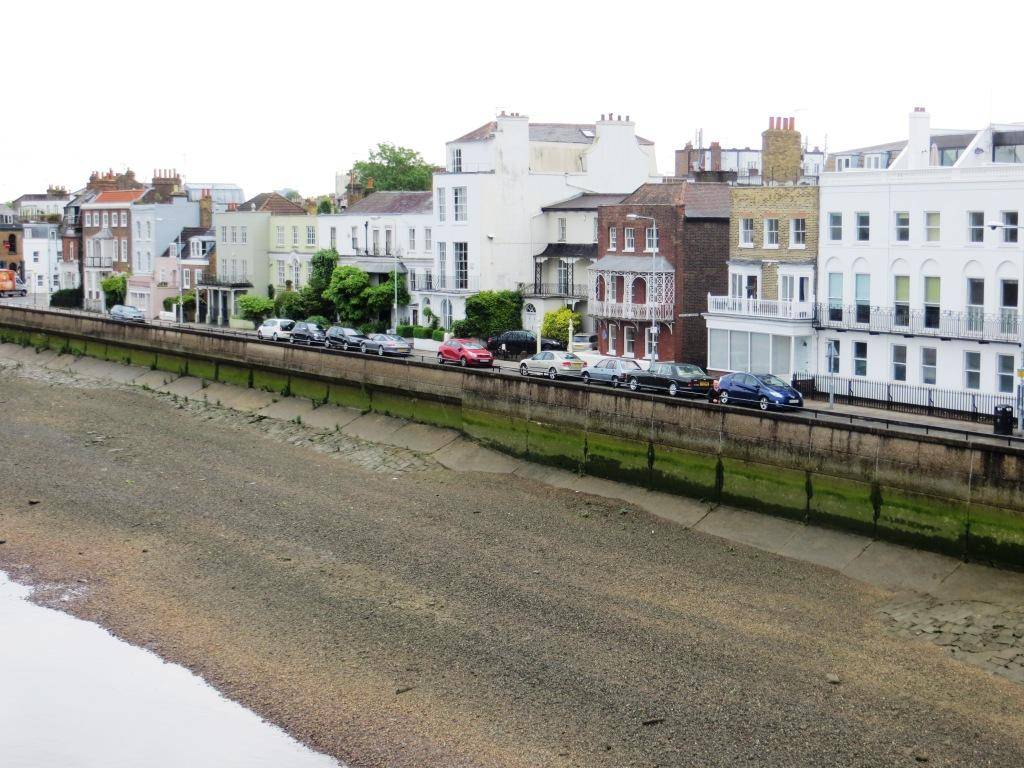
The original bridge at this location was built in 1849 to a design by Joseph Locke and still stands unused on the upstream side. A group of enterprising locals upstream are aiming to convert it into a garden walkway linking the neighbourhoods of Barnes and Chiswick – basically just plant a few seeds and away you go – like the sound of that, and MUCH cheaper than the (now no more) garden bridge scheme at the South Bank that was going to cost £185 million.
Once over the river, we cut back up along Long Walk, a useful pedestrian route into the heart of the Barnes Conservation area, which meant we could avoid the busy riverside road. Lots of small houses and terraced cottages.
Railway Side, a quaint street that we walked along, is no longer quite as close to the railway as the name suggests. These days a roughly triangular plot of land (used as allotments) lies between Railway Side and the Waterloo-Windsor line. The Barnes Curve used to run through here, connecting up directly with the Hounslow (Barnes Bridge) Line. Beautiful green spaces often arise out of the least auspicious origins; little parcels of wasteland that somehow become oases of green and pleasant land.
The Old Mortlake Cemetery laid out in 1887, is quite a discovery, a haven of green space, and we were able to enter it from the north side in South Worple Way (gate opens at 10 am). The walking group being very much a group of completer-finishers, they were happy to take up my assignment of searching for a couple of specific graves; and we spent some considerable time peering at the gravestones, our eyes moving from one worthy Victorian sentiment to the next:
“Nothing in my hand I bring, Simply to Thy cross I cling.”
“Tell me my soul, can this be death? All is well, all is well.”
“Who plucked this flower? “I”, said the Master, And the gardener was silent.”
Lucy must take the credit for finally finding our first target grave, that of Charles Dickens the Younger. To say that she danced on his grave would be unfair, but we had spent some considerable time by then looking fruitlessly around. The inscription reads: “I am the Resurrection and the Life saith the Lord. Charles Dickens the Younger. Eldest son of Charles Dickens. Bessie Dickens, born June 15th. 1840, died April 18th. 1907, aged 66 years.”
‘Charley’ Dickens married Bessie Evans in 1861. The father of the bride was a partner in Bradbury and Evans, who had been Dickens’s publishers for a while. Charley went into a career in business and banking, but was declared bankrupt in 1868; following which, his father gave him a job on the magazine ‘All the Year Round’. After the death of his father in 1870, Charley bought Gad’s Hill Place, Dickens’s house near Rochester, but was forced to give it up because of his own failing health. If you are interested in seeing this grave, it’s after the path swings right, on your right. It is Section S, Grave Number 148.
And there is another one for you to find that we eventually gave up on; that of Edwin Chadwick. He was one of the prime figures in Victorian social reform and the Chief Officer of the Poor Law Commission between 1834 and 1854, during which time he published a damning report on workers’ sanitary conditions, as well as taking steps to abolish child labour. He also campaigned to stop cramming dead bodies into over-populated churchyards in his publication ‘The Practice of Internment in Towns’ – something that led directly to the creation of the ‘Magnificent Seven’ London cemeteries in the 1830s and 40s. He lies beneath a more modest plain grey slab with faded writing (if you can find a map of the graves, which we couldn’t, it is in Section X, Grave Number 141).
We reached the Beverley Brook from Hertford Avenue, through a thriving set of allotments, a reminder of the fertile zone around the brook which had given the area its wealth from the 18th century onwards. In 1837, the Tithe Commissioner reported that the wealth of the parish of Barnes was in its market gardens. For over 200 years, many seasonal workers were employed in the cultivation of a multitude of exotic fruits and vegetables on the Westfield, this area that we are just entering, where the rich, damp soil bordering the Beverley Brook encouraged the growth of asparagus, liquorice and soft fruits.
So nice to see that nothing much has changed today, except perhaps that with the rise of the organic revolution there are gardeners of all ages and sexes as well as the flat cap stalwarts (plus some very fine scarecrows).
The Beverley Brook took us upstream directly to Richmond Park. The brook rises in Worcester Park, flows north east through Wimbledon Common and Richmond Park, forms the brief boundary of East Sheen and Roehampton and finally joins the River Thames above Putney Embankment at Barn Elms. If you are interested in walking its entire length (10.5 kms, 6.5 miles) at some point rather than just this short stretch, then download this leaflet: http://www.merton.gov.uk/beverly_brook_walk.pdf . This would also combine well with a trip to the amazing London Wetland Centre – a wetland reserve run by the Wildfowl & Wetlands Trust covering 40 hectares, (100 acres), just to the north of the brook’s outlet into the Thames. The wetlands have more than 200 bird species and 2.5 miles of footpaths, and there are guided walks each day at 11.30am and 2.30pm.
Beverley Brook is recorded as ‘Beferithi’ in 693. The name is derived from the former presence in the river of the beaver, a species extinct in Britain since the sixteenth century, but now being re-introduced (or should that read pardoned escapees) in parts of Scotland. Since the introduction of improved treatment methods in the late 90s, the range of wildlife species in the river has steadily increased.
Palewell Common, which we next pass through, is part of the extensive common lands that existed before the enclosure of Richmond Park, from which it is separated by a large brick wall, a reminder that the park was once private (the brick wall was erected by Charles I, one of the many reasons he became unpopular).
We entered Richmond Park through the Roehampton Gates. If you have never been, or haven’t been for a while, the first thing you are struck by is the vast expanse of the place. This is the biggest park in London and one of the biggest in Europe (955 hectares, 2,360 acres) and has remained largely untouched for several hundred years. It is a National Nature Reserve and is full of natural features – woods, streams, ponds (16 by my calculation…) and abundant wildlife. We even managed to walk through a bog at one stage.
And we should feel grateful that it was so easy getting though the gates. That is in large part thanks to a certain John Lewis (no relation), a local brewer who, back in 1758, was sent packing by the gatekeeper, who refused him entry to the park. Princess Amelia, second daughter of George II and appointed as keeper of the park, had a few years earlier taken it upon herself to exclude all people from the park other than a few close friends. There is no record of whether the good brewer had an Andrew Mitchell Plebgate moment (remember that?!), but suffice to say he took the gatekeeper to court.
After much delay, the court ruled in favour of Lewis, citing the fact that when Charles I enclosed the park back in the 17th century, he had conceded the public right of way through the park. Princess Amelia only very grudgingly accepted the ruling, and installed ladder stiles for public use, but made sure that the rungs were so widely spaced that they were unusable. Lewis went back to court to challenge this and won once again. And we have been the beneficiaries ever since, so thank you, John. Full right of public access to the park was formally confirmed by an Act of Parliament in 1872.
But our walk in the park began with a minor argument. Over to your left as you enter the park you will see London County Council’s Alton Estate bordering Richmond Park, in the style of Corbusier. At the time of its completion in 1958, Alton West was considered by many British architects to be the crowning glory of post-World War II social housing. More power to the people again.
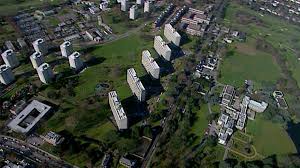
Alton Estate, copyright BBC
What made Alton West so special at the time was its response to its setting. Built on a large expanse of parkland on the edge of the park, Alton West was a direct translation of Le Corbusier’s idea of the Ville Radieuse or park city, sets of point and slab blocks being surrounded by the beauty of Richmond Park below.
Our party was equally divided between love and hate – slab blocks or ‘ships in the air floating gracefully towards the park’? Perhaps that’s a condition of great modern architecture, that there is no consensus? Or is it simply that one set of us has bad taste… perhaps we will never know.
You can probably guess which side Sir Richard Rogers is on. He praised the estate as a ‘modern utopia, one of the best estates of its kind in the world’, an urban setting amongst green spaces with fabulous views, ‘white towers marching across the green landscape’. The lead architect was Lesley Martin, who had also been the Chief Designer of the Royal Festival Hall, so a pretty good pedigree. You can find out more about Rogers’ view on BBC Collections, Post-War architecture at http://www.bbc.co.uk/programmes/p01rtkbd
There are so many routes that you could take through the park, it depends very much on mood, energy of the group, weather and season. But we decided a neat route would be to follow a tributary of the Beverley Brook – really no more than a trickle – up to the Pen Ponds.
As we walked up alongside this little stream, the White Lodge came into view up the slope on our left. Built as a hunting lodge for George II by the architect Roger Morris, it was completed in 1730. Its many famous residents have included members of the Royal Family. The future Edward VIII was born at White Lodge in 1894; and his brother Prince Albert, Duke of York (the future George VI), and the Duchess of York (later Queen Elizabeth the Queen Mother) lived there in the 1920s. In fact, it is the address given on HM the Queen’s birth certificate. But since 1955, it has been the Lower School of the Royal Ballet, welcoming generations of aspiring dancers including Anthony Dowell, Lesley Collier, Christopher Wheeldon and Darcey Bussell.
The Pen Ponds date from 1746. They were formed when a trench was dug in the early 17th century to drain a boggy area, later widened and deepened by the extraction of gravel for local building. The Ponds now take in water from streams flowing from the higher ground around them. The ‘Pen’ in the name refers to a deer pen, of which there would have been several nearby. In the Second World War, the ponds were drained in order to disguise them as a landmark from enemy bombers (was this the same team that covered the White Horse at Uffington with soil and bracken and dynamited the Three Mills chimneys on the River Lea – they must have made a lot of landscape adjustments in their time!)
From this point we followed the track alongside the wood and up the slope to Sawyer’s Hill, which granted us the best imaginable view of London, resplendently laid out in all its glory, fully 10-miles away.
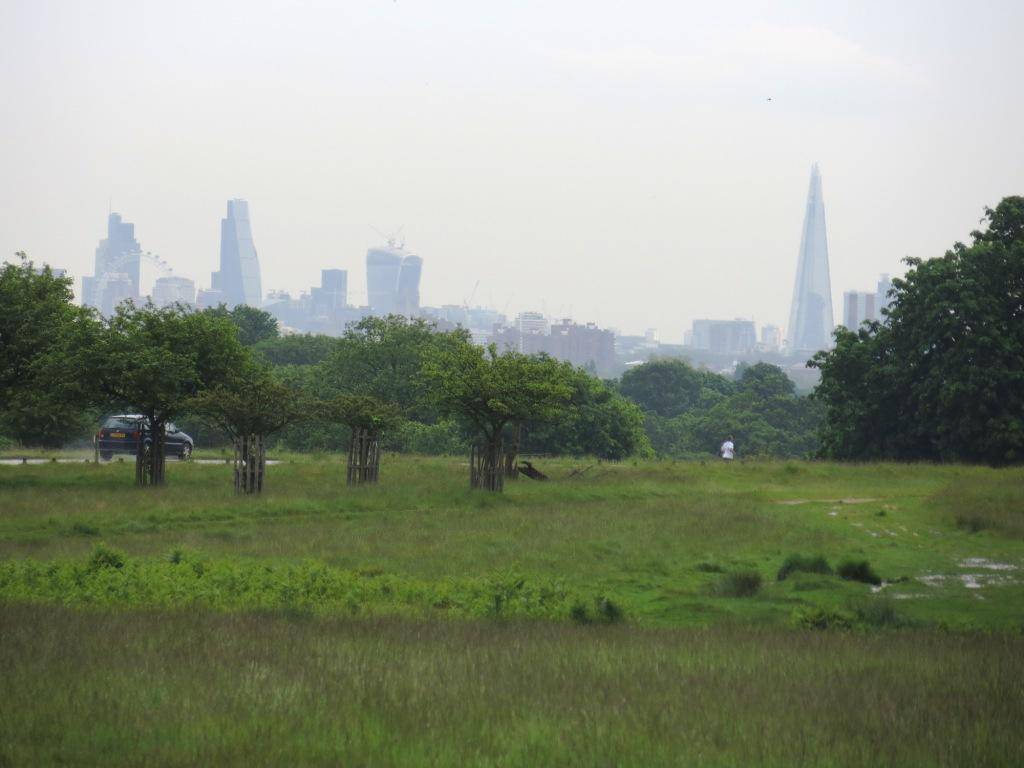
An extra loop – Isabella Plantation, Pembroke Lodge, King Henry’s Mound
If it’s May and the azaleas are out, or if you are feeling particularly energetic, the Isabella Plantation makes a fabulous diversion at this point. Just cross over S in the middle of the ponds and head SW to the (south side of the plantation) Broomfield Gate.
The Isabella Plantation was established in the early 19th century when Lord Sidmouth fenced it off as an area of woodland to keep the park’s deer out. After The Second World War it was transformed into a woodland garden, best known for its evergreen azaleas, which line the ponds and streams and are at their peak flowering in late April and early May. There are also large collections of Rhododendrons and Camellias, plus many other rare and unusual trees and shrubs which provide interest all year round.
Walking north from here we came to Pembroke Lodge, which today has a rather busy feel about it, being a restaurant. In the mid-nineteenth century, it became the home of the then Prime Minister, Lord John Russell and was later the childhood home of his grandson, Bertrand Russell. Just to the north of the Lodge is King Henry’s Mound, a Neolithic burial barrow and the highest point within the park.
Whether you took this detour or stayed with the main route, the path exits via Richmond Gate and along Richmond Hill.
Another little detour, this time to Ham House
Take the first left down the hill onto the meadows.
Petersham Meadows were part of the estate attached to Ham House from the early 17th Century until the latter years of the 19th. There have been cows grazing on Petersham Meadows from at least that time. At the turn of the 20th Century there was public concern that a housing estate would be built on the Meadows. A public campaign, culminating in an Act of Parliament in 1902, has preserved the view of Petersham Meadows from Richmond Hill for posterity. The view from the top is one of the most celebrated in the country. JMW Turner painted it, and the poet Alexander Pope waxed lyrical about it, as did Sir Walter Scott, who described it in his novel The Heart of Midlothian (1918).
Ham House is perhaps the most remarkable Stuart House in the country. Built in 1610 and enlarged in the 1670s, it was a centre for court intrigue throughout most of the 17th century. In its time, the house was at the forefront of fashion; it still retains much of the original interior decoration from that period, including outstanding collections of furniture and textiles. The gardens have been restored to a 17th-century layout.
Terrace Gardens, formerly a brick works cut out into the slope, was opened as a public park in 1887. It is a charming, beautiful and well maintained space, almost good enough to make us want to stop the walk there and then for the rest of the day. And to compound matters there is an über charming café, the Hollyhock Café bang in the middle and housed in a ‘cottage orné’ structure. A Trip Advisor reviewer comments: “The setting alone makes it worth a visit, nestled in glorious Richmond parkland between the river and some of the best views of the river and all of London. It is like stumbling on a fairytale, where you want to become part of the tale. So quaint it hurts. And the food is first class, organic, vegetarian and all manner of constantly changing home-made cooking at its best.” Agreed.
But we eventually dragged ourselves away from a hearty, healthy lunch and dipped down under the road through an eighteenth-century barrel-vaulted tunnel to arrive at the River Thames.
In a few minutes we reached the ghastly Heron Square, made bearable at weekends with some food markets, but the worst type of mock Georgian façades, acting as thin veneers to bog standard office behind. Heron Square forms the central space within the development designed by Quinlan Terry and completed in 1988. Passing quickly on.
I was amazed to discover that there are 32 islands in the Surrey part of the River Thames, with wonderful names such as: Pharaoh’s Island, with 23 homes on it, with Egyptian-inspired names such as Luxore, Memphis and The Sphinx; D’Oyly Carte Island, comprising one large house built in 1888 by the opera impresario; and Eel Pie Island, birthplace of the British R&B music scene in the early 1960s. We soon passed the last islands on the surrey stretch; first Corporation Island, with its dense canopy of stately firs and finally the Flower Pot Islands, two almost circular, willow-shrouded mounds, once a single island, cut in two in 1776 by the Duke of Queensbury (ask not the reason why…)
Richmond Green (4.9 hectares, 12 acres) has been described as “one of the most beautiful urban greens surviving anywhere in England”. It has a long history of hosting sporting events; from the 16th century onwards tournaments and archery contests have taken place here, while cricket matches have been played here since the mid 18th century and still are. One of the first recorded inter-county cricket matches was played on the Green in 1730 between Surrey and Middlesex.
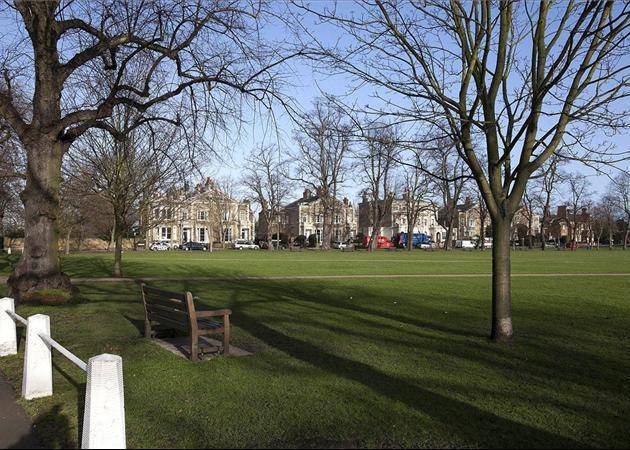
Kew Gardens (121 hectares, 300 acres) is the world’s largest collection of living plants. The official national botanic garden since 1840, its living collections include more than 30,000 different kinds of plants, while the herbarium, which is one of the largest in the world, has over seven million preserved plant specimens.
Back in the early 18th century the Royal Family had used Kew Palace as their summer residence. Prince Frederick and Princess Augusta, parents of the future George III, started a garden around Kew Palace. In 1759 William Aiton was recruited from Chelsea Physic Garden to manage the small “Physick Garden” at Kew. This garden grew in size, absorbing in stages land from the Park, and became a place for the Royal Family and a succession of gifted gardeners and scientists to experiment with plants and garden landscaping. One of the first structures we saw on entering is the familiar Chinese pagoda, which dates all the way back to 1760.
The Palm House was built by architect Decimus Burton and iron-maker Richard Turner (check out our Belfast walk, he also built the Belfast Botanical Gardens glasshouse) between 1844 and 1848, and was the first large-scale structural use of wrought iron. It is considered to be the world’s most important surviving Victorian glass and iron structure. The structure’s panes of glass are all hand-blown. The Temperate House, which is twice as large as the Palm House, followed a decade later.
There is so much you might be tempted to see in Kew Gardens, I would hate to drag you out too soon. For a panoramic view of the whole site (and assuming you have a reasonable head for heights) head for the spectacular Treetops Walkway.
Staying on the river route:
Note; Kew Gardens is £15.50 admission per adult, children 16 and under £3.50 (2017 prices); so if you are a big group and don’t fancy the expenditure, stick to the river path all the way back to Kew Green. There’s plenty of interest this way too.
Richmond Lock and Weir were built in the late nineteenth century to maintain a navigable depth of water upstream of Richmond. For about two hours each side of high tide, the sluice gates which make up the barrage are raised into the footbridge structure above, and river traffic can pass through the barrage unimpeded. For the rest of the tidal cycle, the sluice gates are closed, and boats must use the lock alongside the barrage. This then ensures that there is always a navigable depth of water in the River between Richmond and Teddington.
Another variation:
Syon House (cross over at the Richmond Lock and footbridge, then stay on the west bank all the way to Kew Bridge, where you pick up the route again), and its 80 hectare (200-acre ) park, is the London home of the Duke of Northumberland, whose family was granted the former monastic site at the end of the 16th century. The Tudor mansion was remodelled by Robert Adam for the 1st Duke in the 1760s and the interiors are an architectural tour de force, the great hall being one of Adam’s finest classical works. Features include 30-acres of gardens within a 200-acre park transformed by ‘Capability’ Brown; and a stunning domed conservatory designed by Charles Fowler in the 1820s.
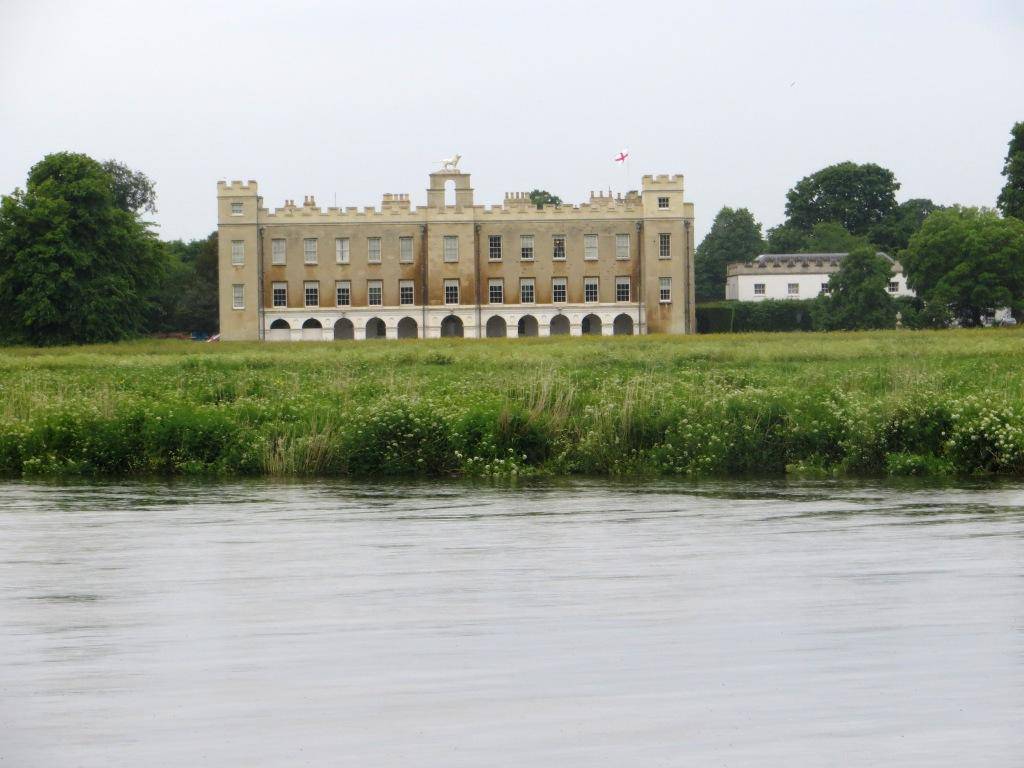
All back in the same place…
Kew Green is a delight, with a quintessentially English feel – an old horse pond, a classical 18th-century church, a cricket square; and in the summer numerous events, including the Midsummer Fête in June and a Horticultural Show in August. Ah to be British is what you will feel on first spying this space (unless of course, it’s raining…)
Visual Health warning: to the immediate north of Kew Bridge is the dreariest set of post-modern buildings you will have seen on this walk. If possible avert your gaze, head quickly down the steps on the right and get set in visually to the splendid Strand-on-the-Green.
The Strand on the Green began life in the Middle Ages as a fishermen’s settlement and is now a charming urban village. Riverside trade and various industries followed without displacing the fishermen. A few members of the nobility and gentry settled in the neighbourhood from Tudor times and in the eighteenth century, the Strand attracted both city merchants and hangers-on of the Hanoverian Georges, who spent much time at Kew.
All these elements mingled. Copyholders built or rebuilt premises immediately adjoining the River Thames; the watermen’s steps and landing stages of the gentry were cheek by jowl with the wharves built for trade by brick-makers, coal and stone merchants, maltsters, market gardeners, nurserymen, boatbuilders, engineers and inn-keepers.
Lots of famous creative people seem to have lived here at one time or another including: Johann Zoffany (portrait painter), Nancy Mitford (novelist), Sir Hugh Cudlipp (newspaper proprietor), Donald Pleasence (actor), Keith Richards (musician) and Ant & Dec (entertainers). At one stage Dylan Thomas stayed there. The inspiration of the riverside views perhaps.
Today one can’t help but flip into rubber necking property speculator mode – how lovely the houses are, how much do they cost, how are they decorated inside and will we see anyone famous? Peering in on other people’s lives never seemed so much fun.
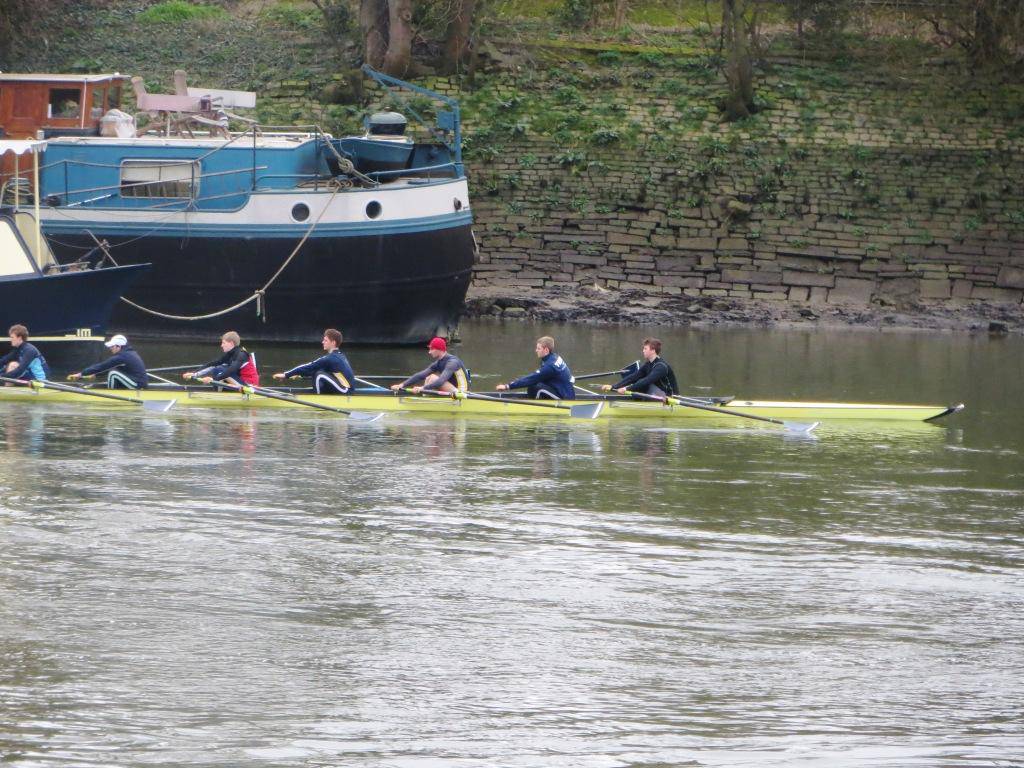
Nearly there…
The final part of our journey took us through the Grove Rd Estate, developed by the Duke of Devonshire, from the 1870s onwards. The Duke of Devonshire had started developing the land of the Grove Park estate as a high-class residential area for wealthy merchants. The earliest housing is on the river side of Grove Park Road, where large Victorian villas were erected, and soon extended to Hartington Road.
Hartington Rd also has a couple of 1930s art deco gems which are worth taking in, although in theory, the best views are from the river. The University of London Boathouse (81 Hartington Road) was built in the mid-1930s and has been in continuous use since as a university boathouse. Most remarkably, there have been no significant alterations to the building. The interior is as originally designed. The first-floor club room is a rare survival of an original 1930s sporting clubhouse interior, and the rowing tank on the ground floor is a fine example of an architect-designed 1930s sports training facility.
In the words of the 20th Century Society: “Viewed from either the Surrey bank of the Thames or from the river, the boathouse is seen together with the adjacent Hartington Court as a part of a unique Thames vista, a continuous panorama of 1930s water-front architecture. Nowhere on the tideway is there such an extensive and striking unspoiled view of distinguished architecture of that period.”
Hartington Court, comprising 56 residential apartments, sits happily next door. Deco features include curved ended balconies, a vertical emphasis to main doors and banded windows. Endless speculators have wanted to adjust/expand the building, but so far aesthetic common sense has prevailed and they remain gloriously art deco.
Our journey ended as it begun, in the midst of grand Victorian houses, and finally, the railway station which had transformed Chiswick from being essentially a village to an urban enclave.
THE ROUTE
- Start at Chiswick Station, just on the north side of the railway tracks. Exit the station and proceed right (E) along Burlington Lane. Turn left into Staveley Rd, past the V2 memorial alongside an electricity sub-station, and you will soon find an entrance into Chiswick House Gardens on your right
- Proceed north east through the Gardens to cross the Classic Bridge, then south along the lake and exit onto Burlington Lane by the Great Chertsey Road Gate.
- Go right and then take a path on the left just by the side of a blue railing. This leads down to Dukes Meadow. On reaching the river, turn right and cross Barnes Railway Bridge.
- Take the steps down from the platform level to The Terrace, turn W under the railway bridge and immediately left (S) along a passage called Long Walk
- When you reach the very end of Long Walk, turn W into Westfields Avenue, then first left (S) into Cross St
- At the bottom of Cross St, take the right (W) down the very narrow Railway Side until you reach White Hart Lane, at which point you turn left (S) over the railway crossing
- Immediately after the railways crossing turn right (W) along South Worple Way, past a hospital on your left, immediately after which you will find the entrance to The Old Mortlake Cemetery (this gate is only open from 10am)
- Proceed south through the cemetery into Avenue Gardens, then left into the Upper Richmond Rd, then second right into Hertford Avenue
- Proceed south down Hertford Avenue, and shortly take a small path on your left, opposite Sunbury Avenue Passage. This winds down into Palewell Common and Fields, and then the Beverley Brook Walk. Proceed south on the W bank of Beverley Brook until you reach the wall of Richmond Park, turn left across a bridge and enter the park via the Roehampton Gate
- Once in the park, re-cross the Beverley Brook and follow it upstream to where a tributary joins it on the right. Follow this tributary SW to reach the Pen Ponds
- From the Pen Ponds, head NE up a defined track with a wood on your left until you reach Sawyer’s Hill and the road; head W to exit via the Richmond Gate
- Head NE along Richmond Hill, which soon affords you magnificent views of the River Thames
- Proceed down through the Terrace Gardens and exit under the main road via a tunnel to reach The Thames Path. Turn right and continue until you have just gone past the White Cross Pub
- Turn right shortly after the White Cross pub opposite Corporation Island up Friars Lane; take the right into King St just before the green, and then take Paved Court passage north to Richmond Green (Note: if you do not intend to take the Richmond Green route at this point, stick with the river route all the way to Kew Green. You might choose this route because getting into Kew Gardens is not cheap: £15 for adults and £3.50 for children 16 and under – no concessions for urban ramblers.)
- Exit the green on the NE side across the Little Green into Little Green Rd, then Parkshot
- Cross the busy Twickenham Rd into Kew Foot Rd, and then where it bears right into Jocelyn Rd keep straight ahead along a passage, turning right when you reach Old Deer Park Gardens
- On reaching the main Kew Rd, turn left (NE) heading all the way to the Lion Gate entrance of Kew Gardens; proceed through past the Temperate House and Palm House, exiting by Elizabeth Gate onto Kew Green.
- On reaching Kew Bridge, cross it, go down some steps on the other side and continue E along the river, along the Thames Rd and soon by the riverbank footpath along Strand-on-the-Green, past glorious Georgian houses.
- Where the path leaves the river, head up Grove Park Rd, then right along Hartington Rd, then first left (E) back up Grove Park Rd and you will shortly be back at Chiswick station. There is a public footbridge to cross to the other side.
PIT STOPS
Chiswick House Café (020 8995 6356) is housed in an exquisite modern building, named RIBA London Building of the Year 2011.
Orange Pekoe Barnes, 3 White Hart Lane, SW13 0PX (www.orangepekoeteas.com, 020 8876 6070). Pekoe’s philosophy is to offer you loose leaf teas in their purest form and we travel far and wide to find you the finest handpicked tea leaves in the world.
Hollyhock Café, Terrace Gardens, Richmond, TW10 6UX (020 8948 6555). I think you know by now that this is a favourite spot of mine, but it might not be to everyone’s tastes as it has a slightly alternative feel to it.
The Pavilion Restaurant in Kew Gardens, close to the Lion Gate entrance and the Pagoda is also a good choice, especially on a summer’s day sitting under the vine-sheltered terrace.
QUIRKY SHOPPING
The Food Market Chiswick (W4 2RX) is held in the farmyard setting of the Grove Park Farm House, adjacent to the Dukes Meadows recreational area, every Sunday 10am-2pm.
White Hart Lane, Richmond (SW13 0PZ) has lots of interesting and varied independent shops, with an emphasis on interiors and fashion.
Heron Square in Richmond (TW9 1TH) has a Farmers’ Market on Saturdays and the Duck Pond Market on Sundays, offering locally made arts and crafts, gifts, vintage, homewares, clothing and food & drink.
Richmond Green (TW9 1HH): the streets and lanes to the immediate east also have a good range of independent shops.
PLACES TO VISIT
Chiswick House Arguably the finest remaining example of Neo-Palladian architecture in London, the house was designed by Lord Burlington and completed in 1729.
Ham House, Ham St, Richmond-upon-Thames, Surrey TW10 7RS (020 8940 1950) National Trust.
Syon Park & House, Park Rd, Brentford, Middlesex TW8 8JF (020 7870 7777, www.syonpark.co.uk)
Kew Gardens You could happily spend half a day here, there is so much to see and do. Take a closer look at www.kew.org
MORE TO DISCOVER
Read: ‘London’s Lost Rivers’ by Paul Talling; he also runs tours.
Read: London’s Royal Parks, by Paul Rabbitts

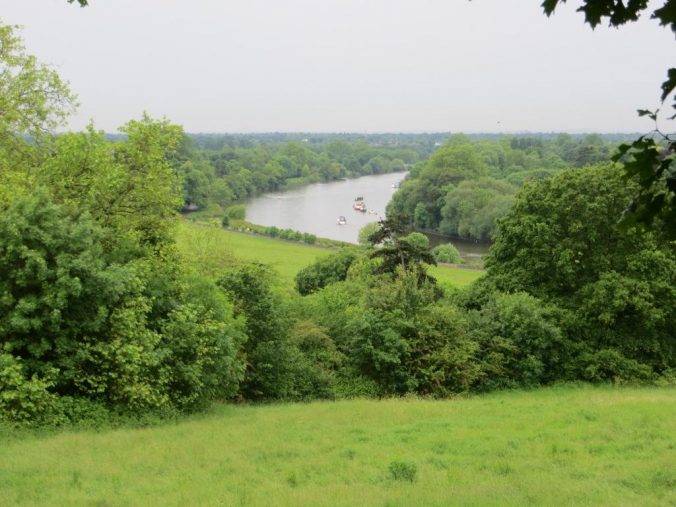
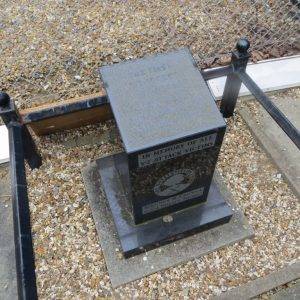
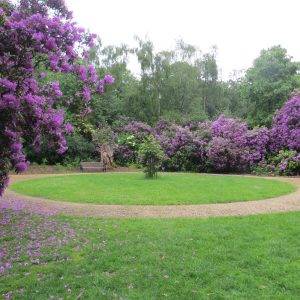
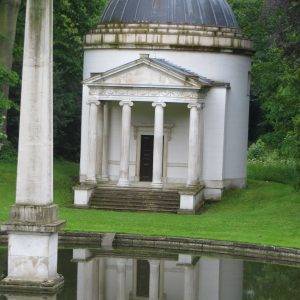
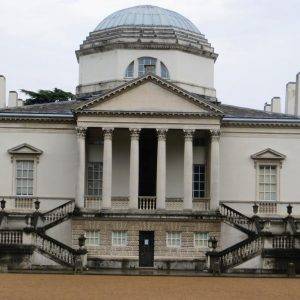
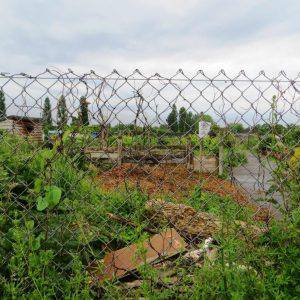
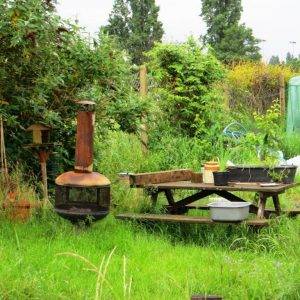
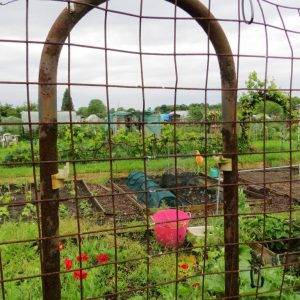
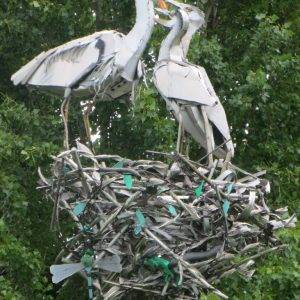
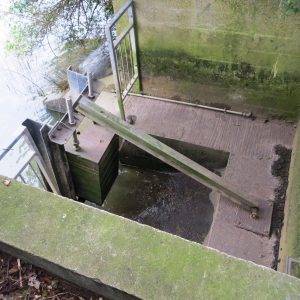
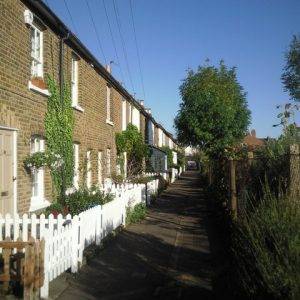
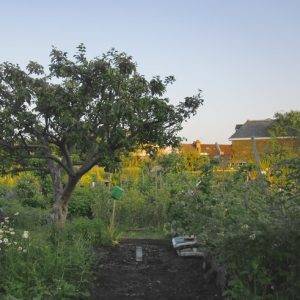
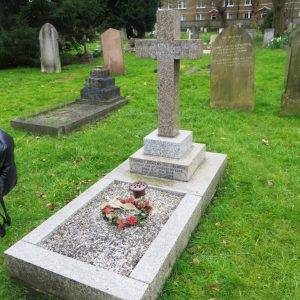
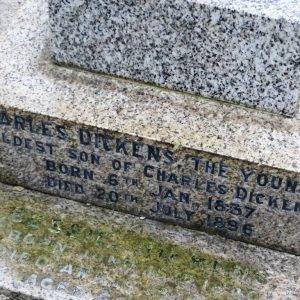
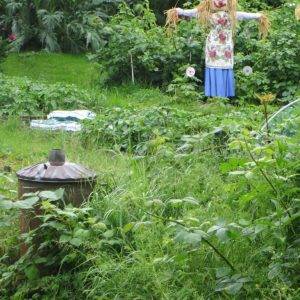
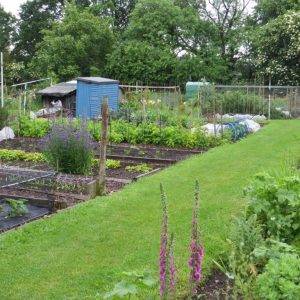

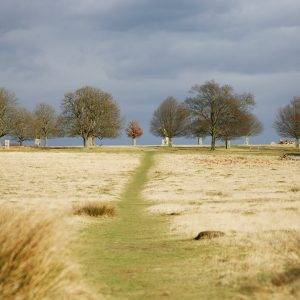
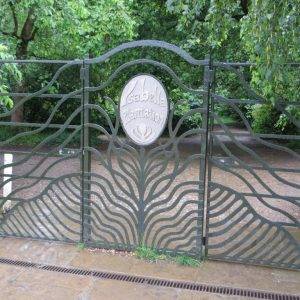
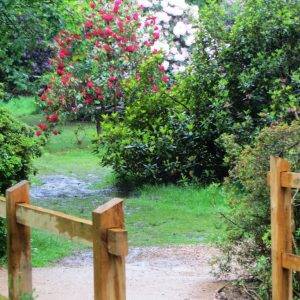
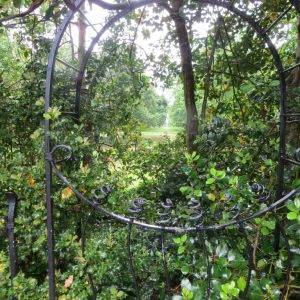
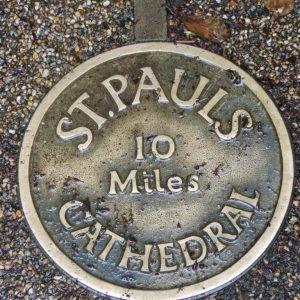
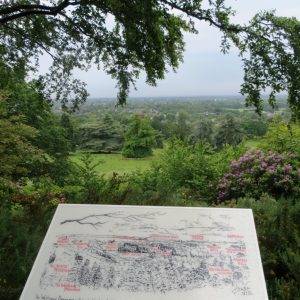
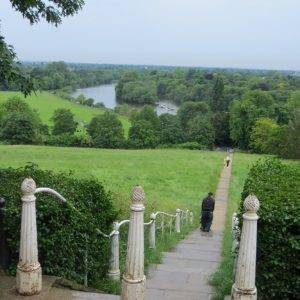
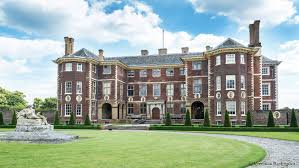
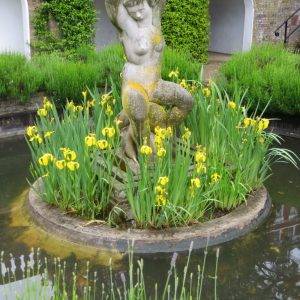
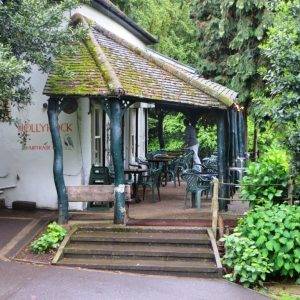
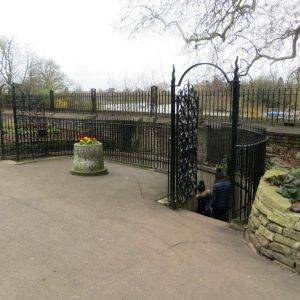
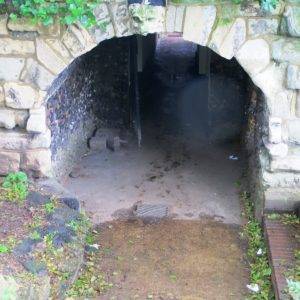
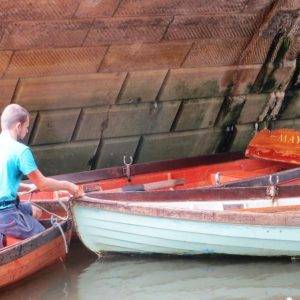
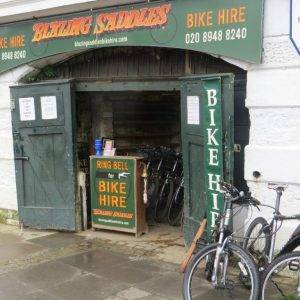
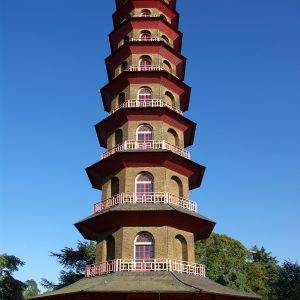
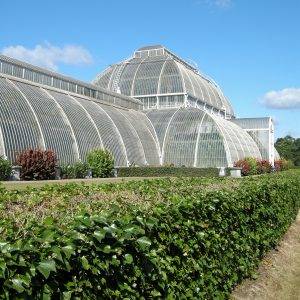
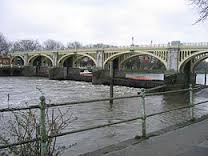
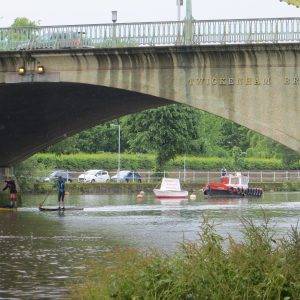
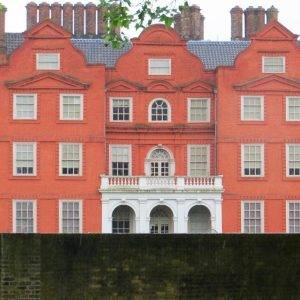
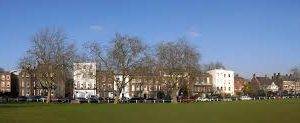
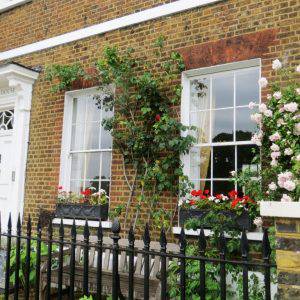
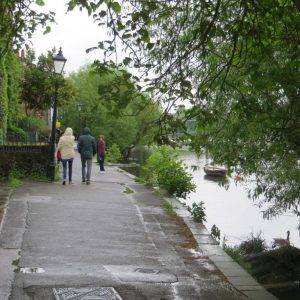
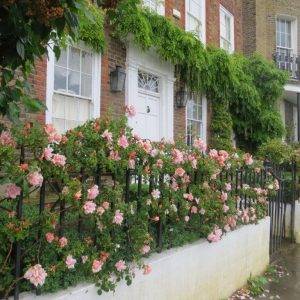
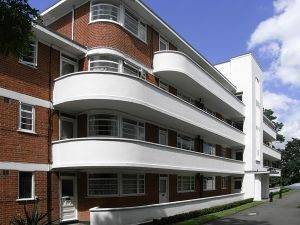
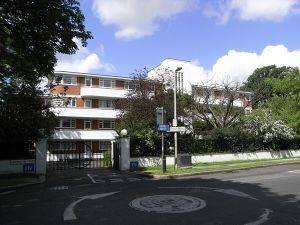
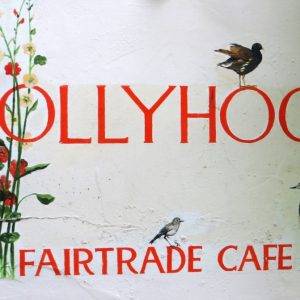

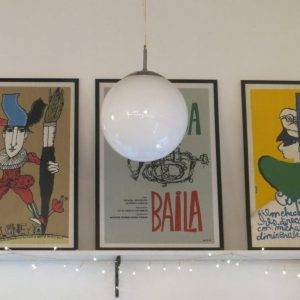
0 Comments
1 Pingback